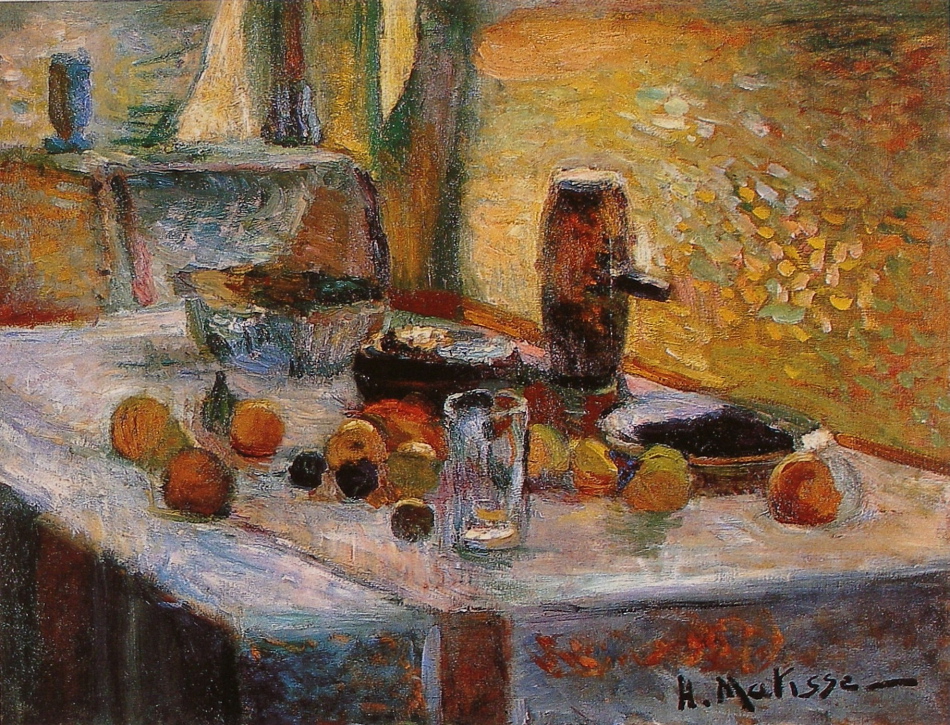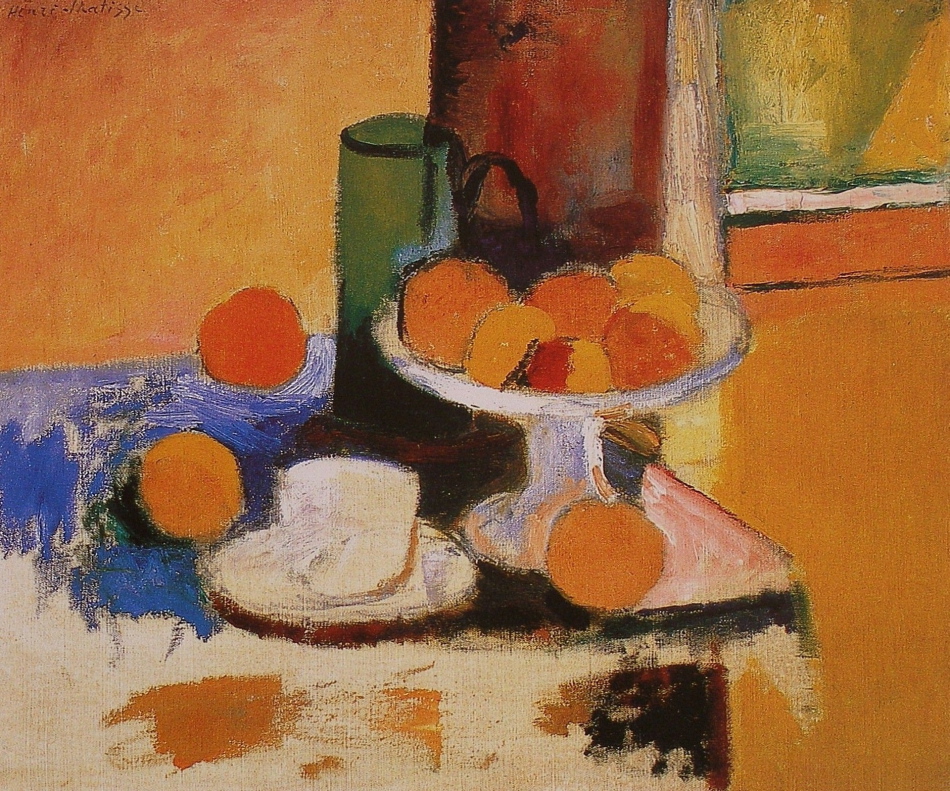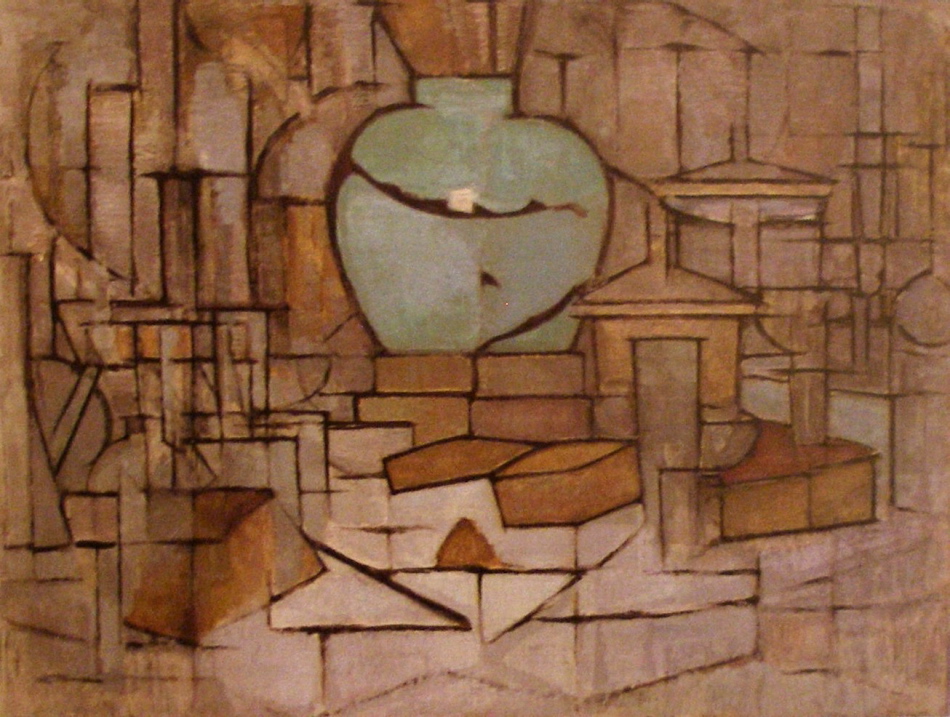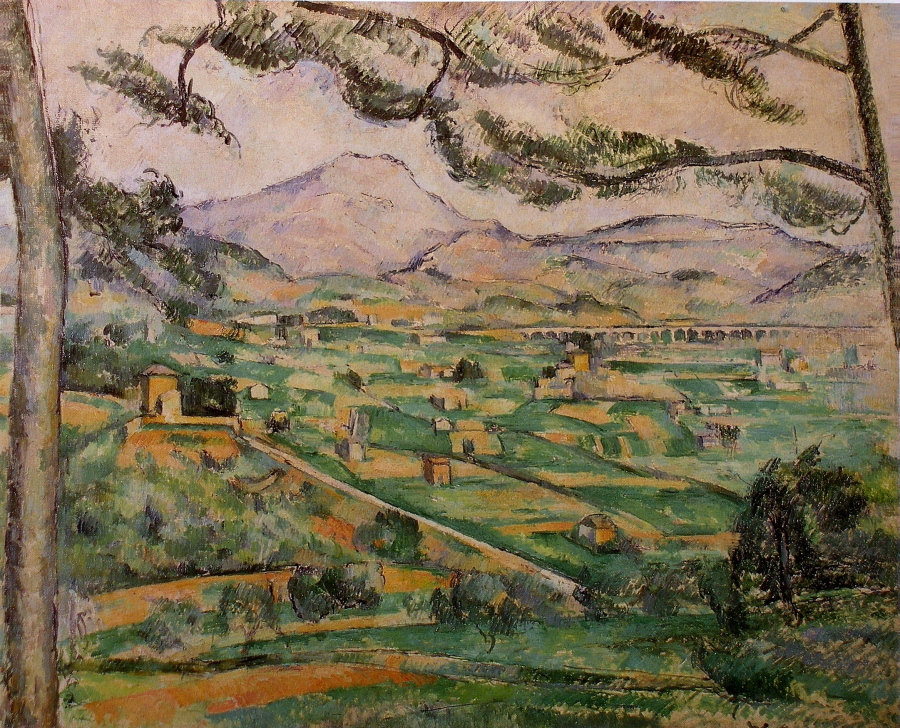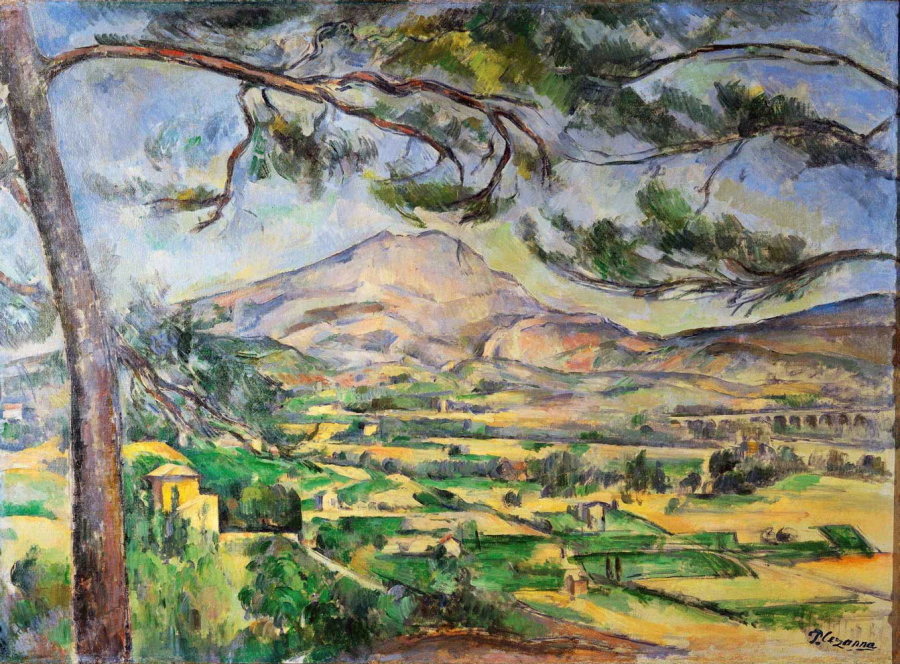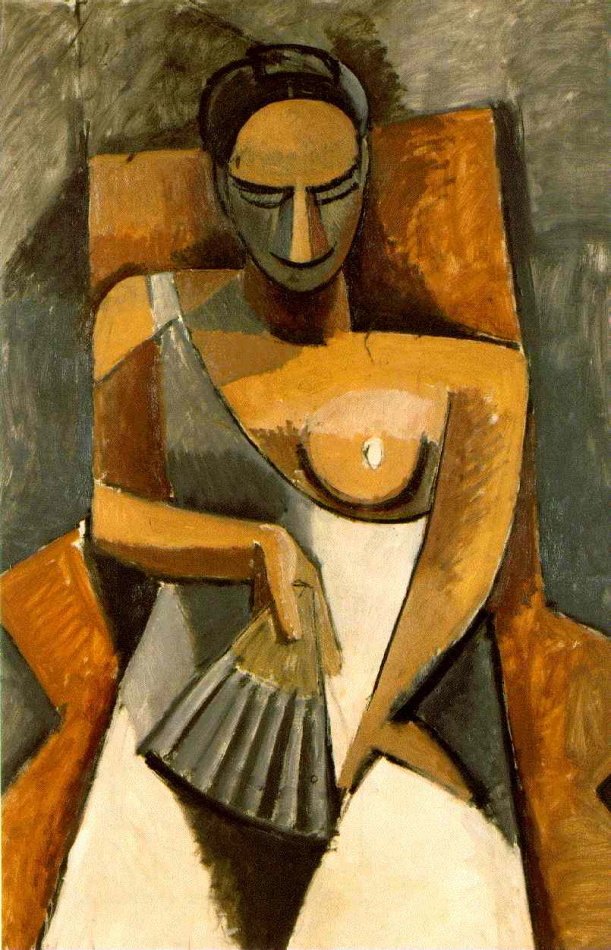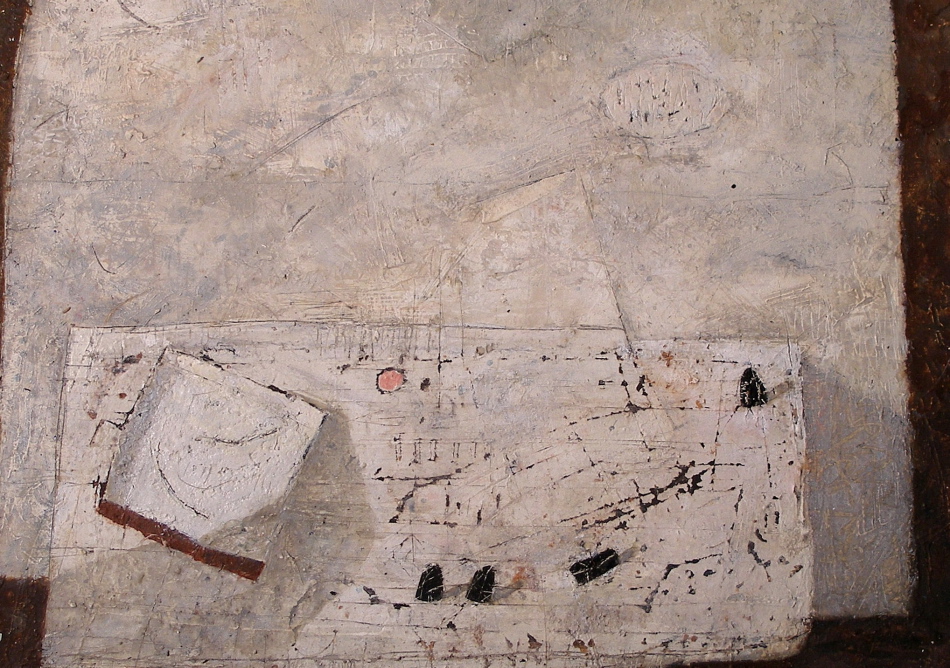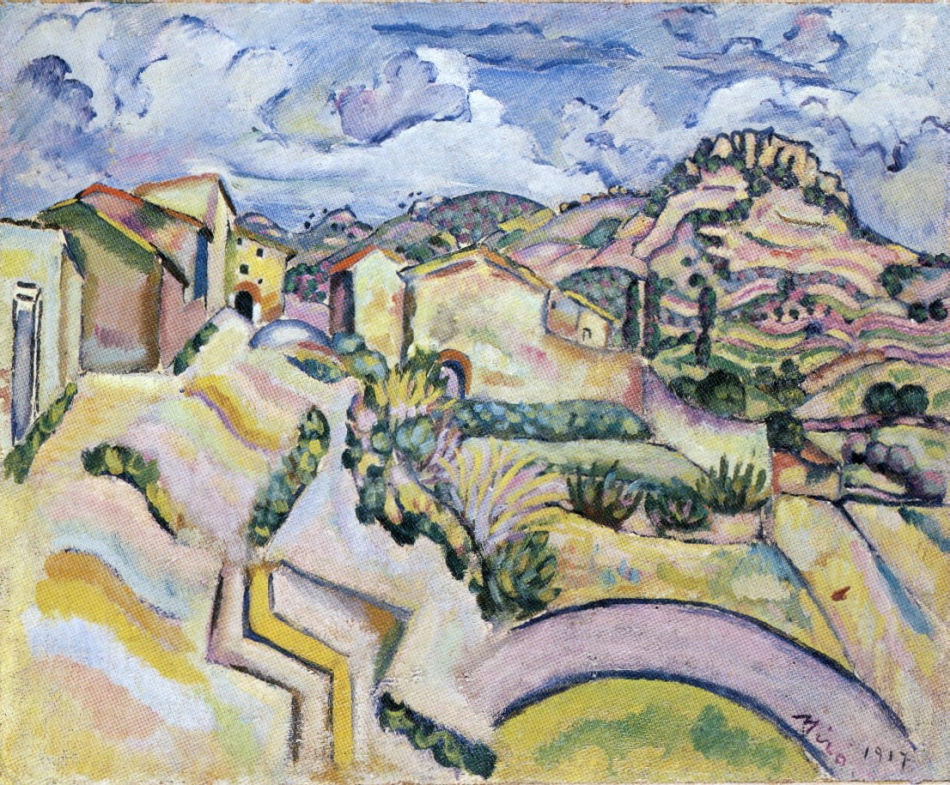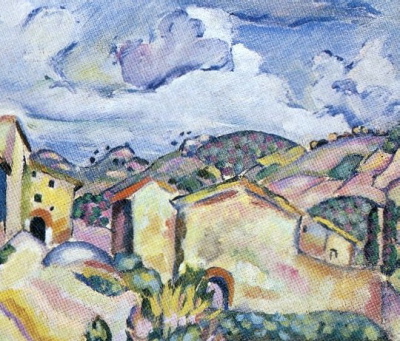Permitting the work of notable artists to show in your development has a great tradition, and can lead to a commitment or direction. The key is being aware of the difference between influence and copying.
The above development level painting by Matisse is a good example of having too many considerations . We have difficulty moving gracefully through the painting because he is more focused on information (what he sees), rather than adjusting for the sake of composition.
In this painting, done in the same year, Matisse is permitting Cezanne’s considerations of reduced modelling by allowing shapes and colour to come forth. He has become aware of the power of shapes and colour and how to use them to create harmony in composition. We see this in the fruit, the cup and the pitcher as well as the large shapes in the background. How he chose where not to use shadows is impressive because he is freeing himself from depiction. He reduced the fruit on the table to coloured circles because through studying Cezanne, he realized that modelling would only disrupt the rhythm of the circles and unnecessarily clutter the painting, as we see in “First Orange Still Life” above.
He did not copy, as he flattened the fruit more than Cezanne had done. We see the influence as well as the next step towards what we see as a Matisse.
Showing influence and acknowledging it is a great way to develop.

